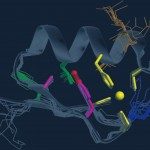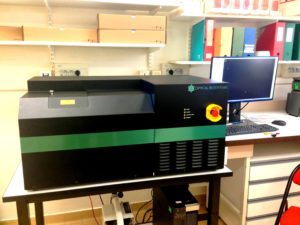Target-based, cell-based and phenotypic/microscopy screening assay have numerous advantages and disadvantages and an important challenge in the near future will be to effectively incorporate new screening technologies into phenotypic screening approaches since the traditional limitation of some phenotypic assays is a considerably lower throughput than target-based assays. A significant impediment to performing microscopy/phenotypic-based screens with small living organisms is the inability to develop microscopy-based assay with high resolution imaging over hundreds if not thousands of cells simultaneously. This hurdle has been recently overcome by the acquisition of the “StellarVision” instrument (Optical biosystems Santa Clara USA, ex Light speed genomics, Novato, USA) in Institut Pasteur.
This automated microscope relies on a unique image acquisition system, which based on a synthetic aperture optical system (ODS). Briefly, all conventional microscopes are limited in resolution by their numerical aperture (NA = n.sinΘ). By the SAO system, it is possible by illuminating the sample by powerful DS4 lasers at different angles to collect spatial frequencies, not accessible with a conventional numerical aperture. After processing the signals using an appropriate algorithm, a “sub-pixel” resolution (64 SAO for each physical pixel of the CCD camera) can be achieved, and thus the resolution of the image can be increased for a low objective, while keeping the field of view (FOV). It is possible for example with a 20x low objective without immersion and the SAO technology to obtain an image resolution equivalent to that obtained with a conventional microscope with a 100x oil immersion objective. The implementation of this SAO technology therefore increases the speed of acquisition of high resolution images with a FOV which is 25x higher than with a conventional microscope, allowing a simultaneous analysis of very large number of cells at a high resolution.
For more information, please contact Alix Boucharlat (alix.boucharlat@pasteur.fr)

